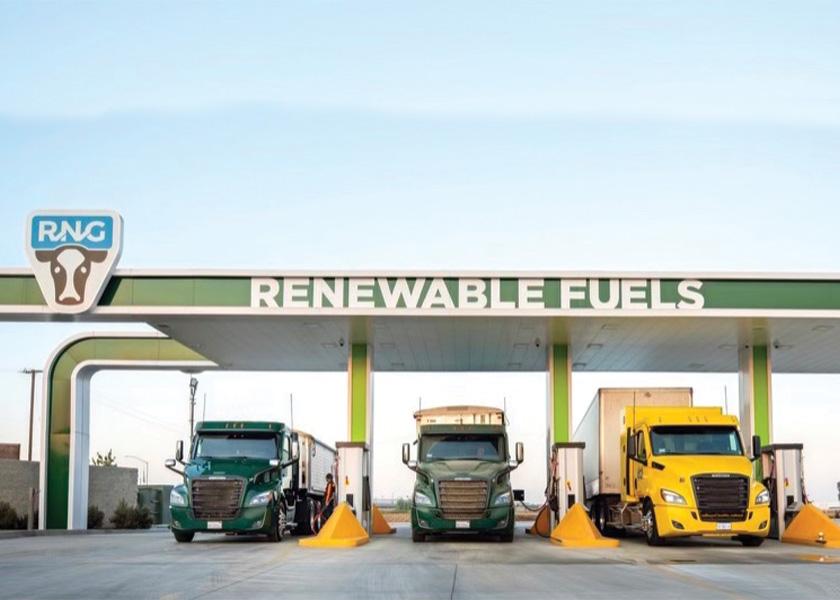RNG: Dairy’s New Financial, Sustainable Gas

It’s a win-win scenario for the dairy industry that seems almost too good to be true. And yet the evolution of Renewable Natural Gas (RNG) is not without its challenges and roadblocks.
RNG is natural gas derived from the decomposition of organic waste material, including food waste; garden and lawn clippings; municipal wastewater; landfill waste; and – the biggie for livestock production – manure.
To capture RNG, manure is loaded into anaerobic digesters, where complex microbial communities break it down. Through a gradual fermentation process in an oxygen-free environment, the waste is “digested,” and the resulting biogas is captured.
The biogas – which is composed of methane, carbon dioxide, and a small fraction of other gases – is then cleaned, conditioned, and ready to use as an energy source for heat, electricity, or vehicle fuel. High-quality RNG can be swapped out for any function in which conventional natural gas is used, and in many cases is injected into the same municipal natural gas pipelines.
As a renewable fuel source, RNG outshines intermittent sources like wind and solar energy, because it is readily available and not dependent on atmospheric conditions. It also is viewed as a “carbon-negative” source. That’s because it comes from organic sources that once absorbed carbon dioxide from the atmosphere during photosynthesis, and it reduces methane emissions, capturing more greenhouse gases than it emits.
According to a U.S. Department of Energy study, RNG-fueled vehicles release up to 95% lower emissions than those fueled with gas or diesel. When considering total reduction in greenhouse gas emissions, the California Air Resources Board estimates that replacing traditional vehicle fuels with RNG derived from dairy manure results in a 400% reduction in greenhouse gas emissions.
For the dairy farms, the benefits of RNG also are numerous, and include:
- The ability to generate additional income by selling RNG energy credits.
- Retention of manure dry matter and nutrients post-digestion, which can be used as recycled bedding and in place of synthetic crop fertilizer.
- Improvement of air quality and odor control around dairies.
- Longer-term, upside income potential for selling value-added dairy products. Energy company Gevo predicts that dairy products may one day be marketed as “sustainably sourced.” Farms that can demonstrate their positive net carbon economy could receive more for their milk because their added sustainability value would be verifiable.
With all of these checks in the “win” column, it seems every dairy farm would be jumping on the RNG bandwagon. But entering RNG production for dairies, despite all of its glowing merits, is a complex and costly proposition.
To justify the expense of installing a digester, and to provide enough manure to run it efficiently, the initial start-up has been practical only for very large dairies. Plus running a digester system requires and entirely different skill set and labor allocation than running a dairy. And in many parts of the country, gaining access to electrical grids and pipelines can be challenging, and must be negotiated on a case-by-case basis.
California is leading the way in dairy RNG production, with more than 100 dairy digesters currently up and running or under construction. Because California set its own renewable fuel standards in 2017, the state has invested heavily in digester projects for dairies, managed via the California Department of Food and Agriculture’s Dairy Digester Research and Development Program.
Public-private partnerships between the state of California, energy companies, and dairies have made RNG production practical for more dairies, thanks in part to the development of “cluster” projects in which multiple dairies feed into a single digester.
According to the U.S. Environmental Protection Program (EPA), there also are some federal initiatives to help kickstart the RNG market.







